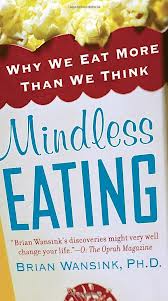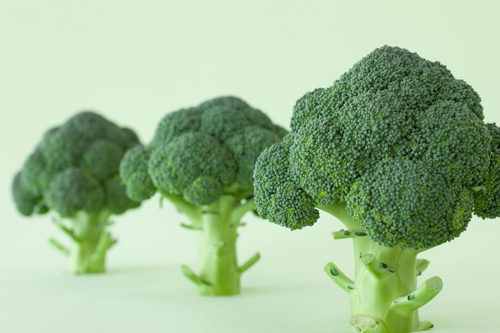

The best diet is the one you don’t know you’re on.
—Brian Wansink
In his book Mindless Eating (Bantam Books), food psychologist Brian Wansink wants you to know that when it comes to winning your own Hunger Game—eating when you’re hungry and stopping when you’re full—he has bad news: The odds are never in your favor. But there are ways to beat the system.
Brian Wansink founded the Cornell Food and Brand Lab, where a laboratory experiment can look like—and is—a Superbowl party, or a date, or a G-rated version of the sexy blindfolded eating scene from 9½Weeks. Wansink and his team have worked with overconfident bartenders, traumatized soldiers, and even kids with a passion for broccoli. He emphasizes that eating reveals culture, and underlines, more than once, that he has focused on U.S.-style eating—which, let’s face it, is spreading to more countries and cultures every day, with unhealthy results.
He does all this in the service of the big questions: Why do we eat what we eat? And how can we eat better?
Here’s what Wansink’s research has revealed about the Eater Americanus.
- We human beings eat with our eyes. We will eat lemon Jell-O turned red from food coloring and swear that we taste a cherry flavor.
- Words matter, big time: tack on the phrase “home-style” to anything, and it just tastes more delicious. Cue almost any scene from Mad Men where Don Draper is pitching anything.
- It only takes a couple of healthy items on a restaurant menu to make us believe that all the food is healthy and low calorie. The meatball sub in a Subway restaurant may be called a “health halo,” but it’s still a meatball sub (and the result is far from angelic).
Does this mean that we are doomed to overeat?
Wansick believes—with much evidence to back him up—that just as we can mindlessly overeat, we can mindlessly eat better. According to him, ‘It’s easier to change our environment than to change our mind.’
The trick is to rig our environments so they support healthier eating. He wants us to use our mindlessness for good.
Wansink’s research is told through a series of compelling stories, and the book is scattered with handy tips. But it is far from a book of goofy checklists. His lab’s work with the military produced some startling results—and some heartbreaking insights about battle stress and PTSD.
The research wonk does surface with the title. With all his marketing knowledge, Wansink could have called his book something more alluring: Three Steps to a Tinier Waist or Small Plates, Big Results. But he didn’t. It didn’t hurt the book, though. Mindless Eating has been embraced by Oprah, and its influence is ubiquitous: It can be felt in New York mayor Michael Bloomberg’s unsuccessful big-soda ban and the proliferation of 100-calorie snack packs.
Wansink’s message: Don’t make your healthy eating steps complex. Keep it to three, and keep them doable.
- Want to eat more slowly? Pick up chopsticks. Not only do you tend to eat more slowly; according to research, it appears to be the utensil of choice of non-obese people in a Chinese restaurant.
- Want to eat less? Use smaller plates.
- Slow down your drinking? Disdain the short stubby glass and ask for the champagne flute.
 My favorite: Want to get your kid to eat broccoli? Don’t call it broccoli. Call it a dinosaur tree. Better yet, get one of her friends to call it a dinosaur tree. Pre-K peer pressure works.
My favorite: Want to get your kid to eat broccoli? Don’t call it broccoli. Call it a dinosaur tree. Better yet, get one of her friends to call it a dinosaur tree. Pre-K peer pressure works.
Wansink’s lab does research for food companies, and some of his anecdotes are doozies: Check out his story about a company that discovers its product is doing poorly because of consumer memories of a campy 70s sci-fi movie starring Charlton Heston. He pooh-poohs the idea that there is some food-industrial cabal scheming to make us addicted to bad foods. Pop-Tarts come in packages of two because of cost, not a conspiracy, he explains—but the explanation comes from the manufacturer. And he goes very easy on big-box stores’ big packaging. Wansink appears cautious to bite the hand that sometimes feeds his research. It doesn’t appear to have affected his results; it may have affected the kind of research he does.
Those caveats stated, it is likely you will look a little harder at how you eat after reading Mindless Eating. I bought a big set of small plates after I read the book, and unearthed my chopsticks.
And I am really, really trying to eat more dinosaur trees.



